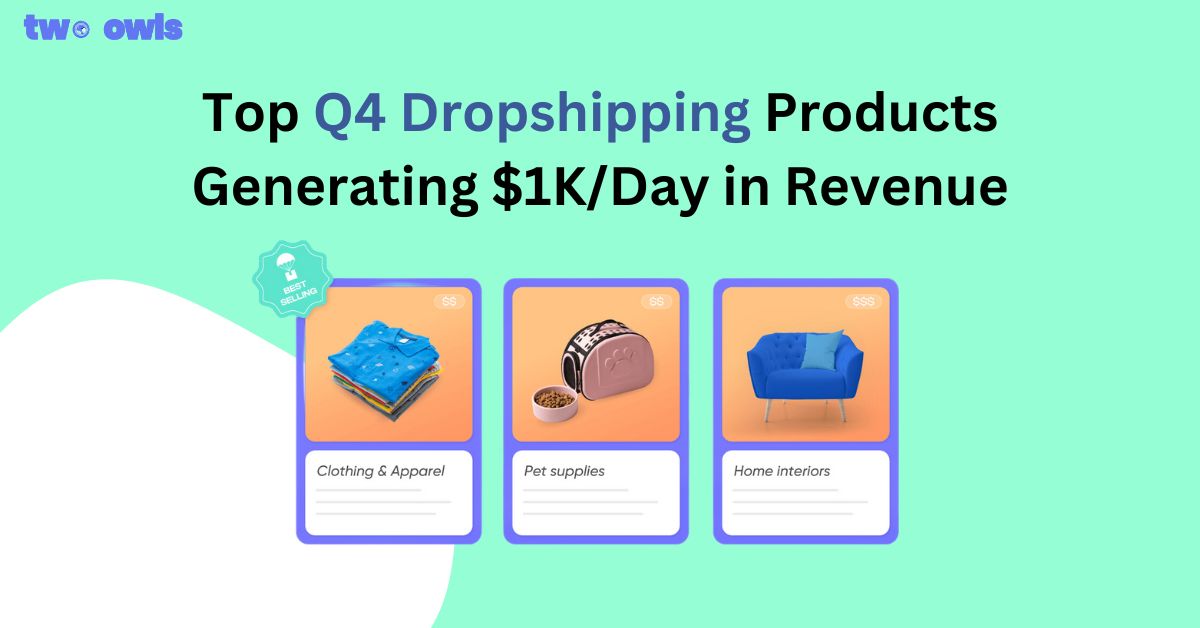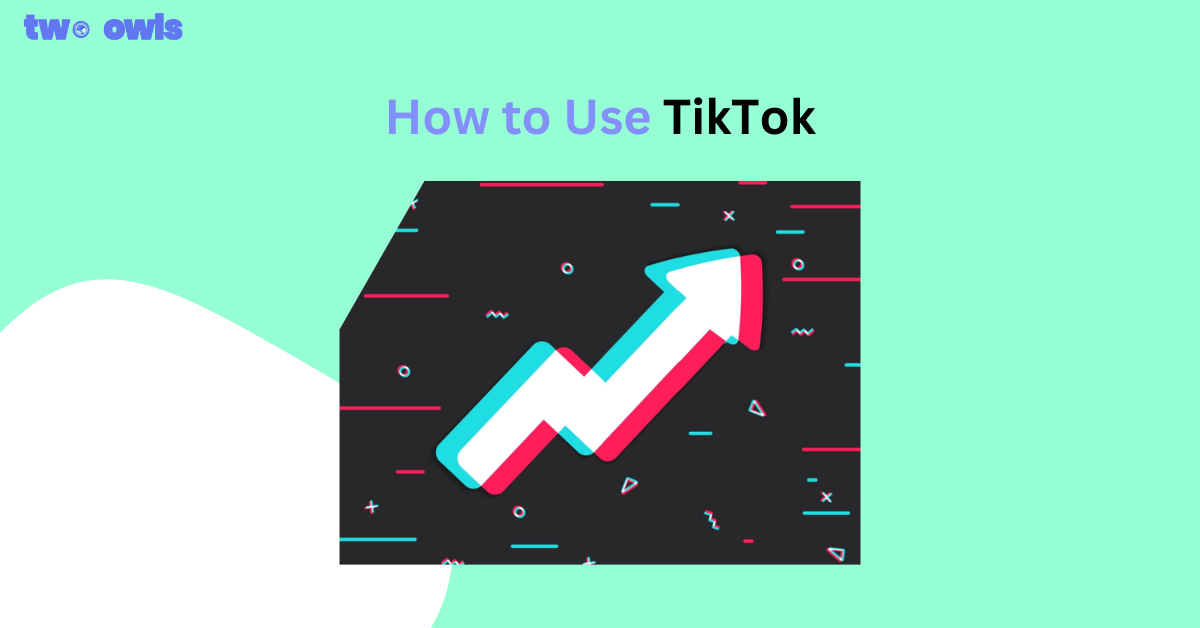What is Cost Per Result in Facebook Ads? How to Lower CPR?
Cost Per Result (CPR) is one of the most critical metrics for measuring the success of your Facebook ad campaigns. It tells you how much you’re spending to achieve a specific action or result, such as a lead, click, or purchase. Understanding and optimizing CPR can help you make the most of your advertising budget, improve campaign performance, and maximize your return on investment (ROI). In this guide, we’ll explore what CPR means, how to calculate it, and effective strategies to lower your costs.
What is Cost Per Result in Facebook Ads?
Cost Per Result in Facebook Ads refers to the amount of money you pay for each action or “result” generated by your ad campaign. A “result” depends on the Facebook campaign’s objective, such as clicks, conversions, leads, or video views. Essentially, it tells you how much you’re spending to achieve a specific goal in your Facebook ad campaign.
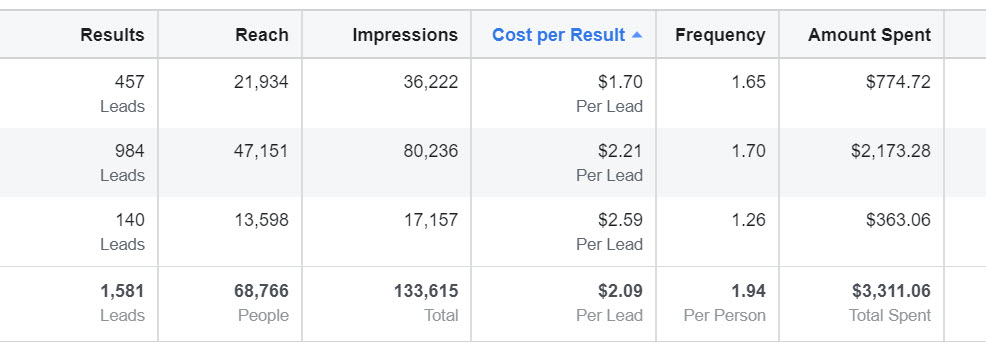
How to Calculate Cost Per Result?
Cost Per Result Formula:

- Total Ad Spend: The amount of money you spent on the entire ad campaign.
- Number of Results: The total number of specific actions (or results) that your campaign achieved.
Example of Cost Per Result Calculation:
Let’s say you ran a Facebook ad campaign to generate leads, and your total ad spend was $200. From this campaign, you were able to generate 20 leads.
Now, applying the formula:
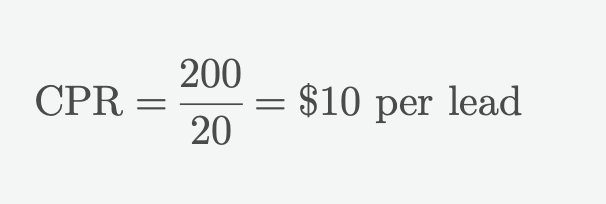
In this example, the Cost Per Result is $10, meaning you spent $10 for each lead your campaign generated.
Why is Cost Per Result Important?
Over time, I’ve found that optimizing this metric can make or break a campaign’s success, especially when budgets are tight and results are everything. Let’s dive into why Cost Per Result is so crucial.
Budget Optimization
Managing your Facebook ad spend becomes much more efficient when you understand how much you’re paying for each action or result. CPR provides insight into this, allowing you to allocate your budget more effectively to high-performing campaigns.
For example, if you’re running two ad sets, one with a CPR of $10 per purchase and the other with a CPR of $25 per purchase, you know to allocate more budget to the first one. By doing this, you can optimize your overall spending and get the most results for the least cost.
Campaign Performance Evaluation
A high CPR can signal underperforming ads, making it a vital metric for assessing campaign effectiveness. If you’re spending more than anticipated to achieve a result, it could point to issues with your ad creative, targeting, or bidding strategy.
For instance, if your campaign aimed at getting leads has a CPR of $50, but your industry benchmark is around $20 per lead, it’s a clear sign that adjustments are needed. Evaluating CPR helps you identify underperforming campaigns, so you can tweak and optimize them to bring the cost down and achieve better results.
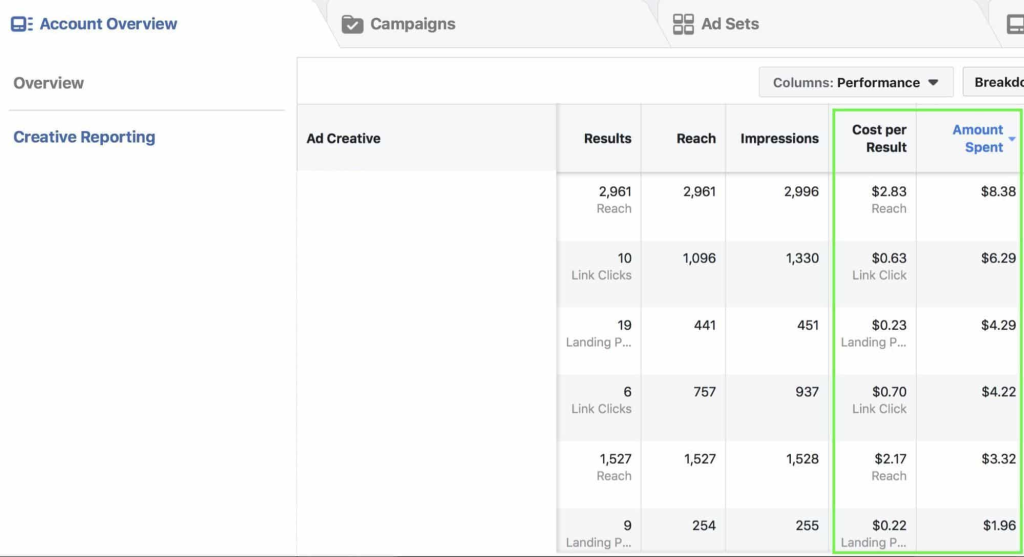
Determining Return on Ad Spend (ROAS)
CPR plays a critical role in determining your ROAS, as it directly affects how much profit you make from each ad spend. If your CPR is lower than the revenue generated per result (e.g., per sale or lead), your campaign is profitable. However, if your CPR is higher than what you’re earning per result, you’re likely losing money.
For example, if you’re running an e-commerce ad with a CPR of $15 per purchase, and each sale generates $50 in revenue, then your return on ad spend (ROAS) is positive, making it a profitable campaign. Monitoring CPR ensures that your ads are not just effective, but also profitable.
Cost Per Result Goal in Facebook Ads
Cost Per Result Goal refers to the target amount you aim to spend for each result or action in your Facebook ad campaign, such as a click, lead, purchase, or any other goal you’ve set. This goal helps you optimize your campaign performance by giving Facebook guidance on how much you’re willing to pay for each desired action.
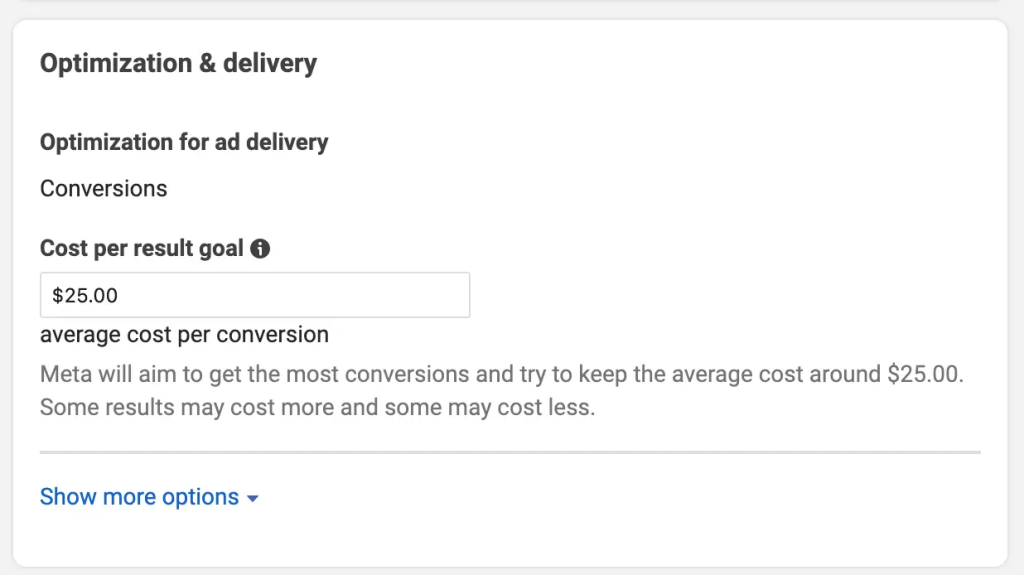
For example, the Cost Per Result Goal is set to $25.00 for a conversion-based campaign. This means that Meta (Facebook) will aim to generate conversions with an average cost around $25 per conversion.
However, it’s important to note that some conversions might cost more than this, while others might cost less, depending on the campaign’s performance and other factors such as audience targeting, competition, and ad quality. By setting a clear CPR goal, advertisers guide Facebook to work within a certain budget to get the best possible results at that target cost.
What is a Good Cost Per Result in Facebook Ads?
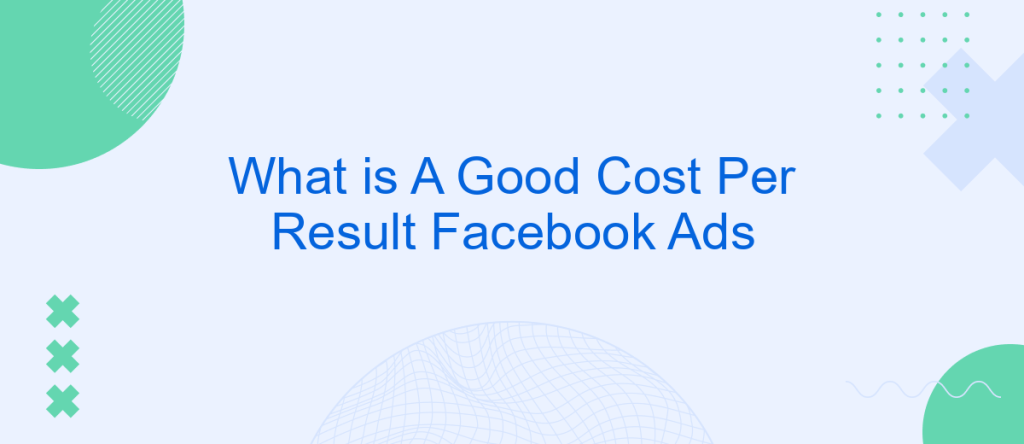
The ideal cost-per-result for Facebook ads varies depending on multiple factors such as your industry, the goal of your campaign, the audience you’re targeting, and the quality of your ads. Typically, it falls around $1.72, but these elements can cause significant fluctuations in the actual cost.
Consequently, advertising in highly competitive industries such as finance or insurance leads to higher costs per result compared to less competitive sectors like apparel. Likewise, targeting a specific niche audience can result in higher prices than targeting a broader, more general audience.
Cost Per Result Benchmarks for Different Industries
I’ve compiled Cost Per Result (CPR) benchmarks for 2024 from trusted sources like LocaliQ and other relevant advertising platforms that provide up-to-date data on industry performance for Facebook Ads. This comparison will give you an idea of what to expect when running Facebook Ads in each industry.
| Industry | Cost Per Result (Range) |
|---|---|
| Automotive | $20 - $50 per lead |
| Beauty and Cosmetics | $5 - $15 per purchase |
| B2B (Business-to-Business) | $30 - $150 per lead |
| Consumer Goods | $10 - $30 per purchase |
| E-commerce | $10 - $30 per purchase |
| Education | $20 - $60 per lead |
| Entertainment | $2 - $10 per engagement |
| Finance | $30 - $100 per lead |
| Fitness and Wellness | $10 - $30 per purchase |
| Healthcare | $30 - $100 per lead |
| Hospitality and Travel | $10 - $50 per booking |
| Insurance | $20 - $70 per lead |
| Real Estate | $20 - $50 per lead |
| Retail | $5 - $20 per purchase |
| Technology | $20 - $80 per lead |
As seen from the comparison, Entertainment offers the lowest Cost Per Result, ranging from $2 to $10 per engagement, making it the most affordable. In contrast, B2B (Business-to-Business) is the most expensive, with costs between $30 to $150 per lead, reflecting the higher value of leads in that sector. This highlights the wide range of costs across different industries.
How to Lower Your Cost Per Result on Facebook?
1. Optimize Audience Targeting
Narrowing or broadening your audience can significantly impact CPR.
For example, retargeted audiences focus on users who have already interacted with your brand, making them more likely to convert, which often results in a lower Cost Per Result (CPR). On the other hand, broad audiences target a wider range of users, giving your campaign more reach, but typically at a higher CPR due to lower initial engagement. While broad targeting can help increase brand awareness, retargeting is more effective when conversion and cost-efficiency are the main goals.
If your goal is to reduce CPR, focusing on retargeted audiences is ideal because these users are already familiar with your brand. Additionally, narrowing down your audience further, by refining your targeting to match your ideal customer profile, can improve ad performance. This ensures that your ads are seen by people most likely to take action, helping to optimize your ad spend and achieve better results.
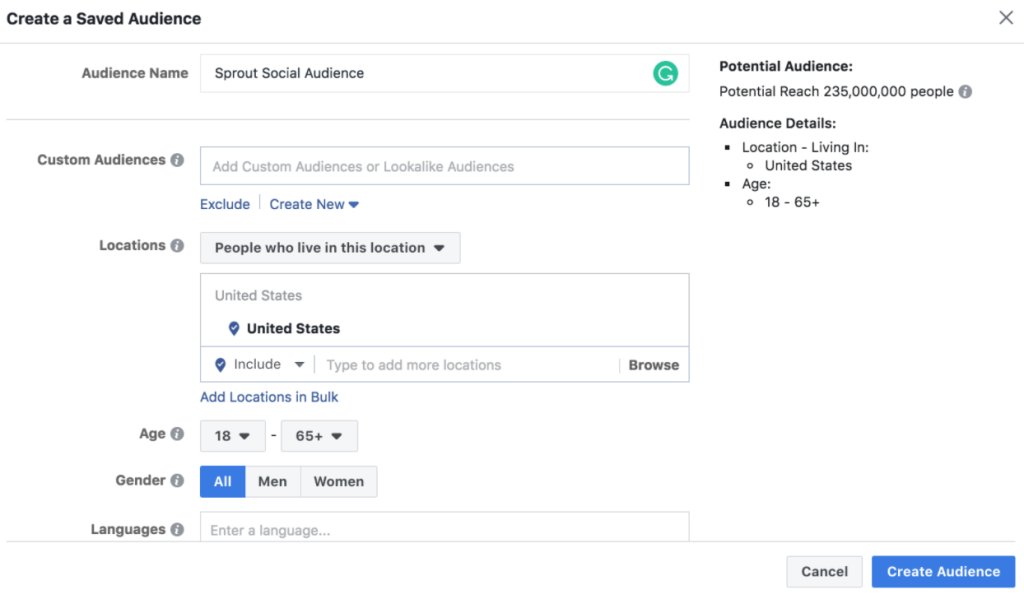
2. Improve Ad Quality and Relevance
Ad Relevance and Quality Ranking are crucial. Ads with a Quality Ranking above the 50th percentile tend to see CPRs drop by 20-25% compared to lower-ranked ads.
Make sure your visuals are engaging and your copy is clear and direct. For instance, video ads tend to achieve a lower Cost Per Result (CPR) than static image ads, particularly when they effectively capture attention and highlight key points quickly. This is because video content often engages users more deeply, resulting in better performance in ad campaigns.
3. A/B Testing and Optimizing Creatives
Regular A/B testing can decrease CPR by 15-20% as it helps identify which ad variations resonate best with your audience.
Test various ad formats such as carousel, video, and single image, and use performance data to identify and remove under-performing creatives. This approach ensures that only the best-performing ads remain active, helping you optimize results and increase efficiency in your campaigns.
4. Use Facebook’s Budget Optimization Tools
To lower your Cost Per Result (CPR) on Facebook, leveraging Facebook’s Budget Optimization Tools like Campaign Budget Optimization (CBO) can be highly effective. CBO automatically allocates your campaign budget to the highest-performing ad sets, optimizing your spending without needing constant manual adjustments.
For automatic bidding, Facebook typically suggests a daily budget that’s 5x-10x your target CPR. So, if you’re aiming for a $20 CPR, setting a budget between $100 to $200 can lead to better performance without manual adjustments.
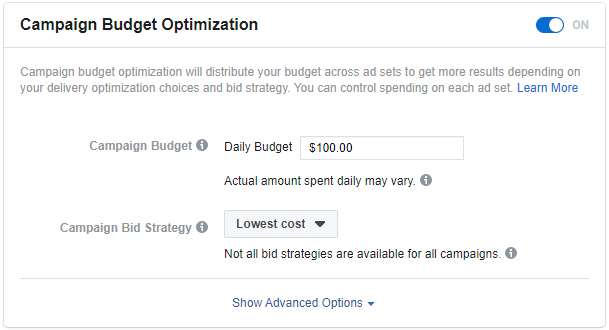
5. Focus on Retargeting and Custom Audiences
Retargeting audiences who have interacted with your website or social media typically results in 40-70% lower CPR compared to cold traffic. For example, if your cold audience CPR is $50, retargeting can bring it down to $15-$30.
Custom Audiences created from your website visitors, especially those who reached a specific landing page, can see CPR as low as $10 when the audience is actively engaged.
Wrap up
Cost Per Result (CPR) is a key metric that shows how much you’re paying for each action or result from your Facebook ads. Keeping an eye on CPR helps you make sure you’re getting good value from your ad spend. By improving things like audience targeting, ad quality, and using Facebook’s optimization tools, you can lower your CPR and get better results without overspending. The key is to always test, monitor, and adjust your ads to keep costs low and performance high.
Introducing Real-time TikTok event testing - Omega TikTok Pixels
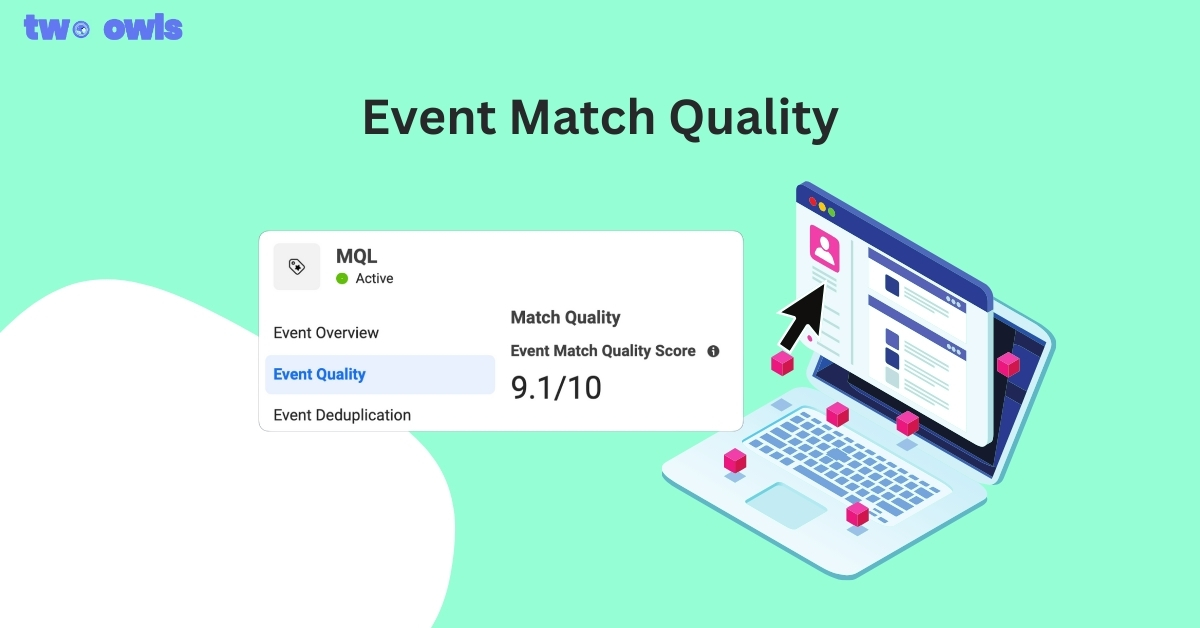
Event Match Quality: Definition, Benchmarks & How to Improve It
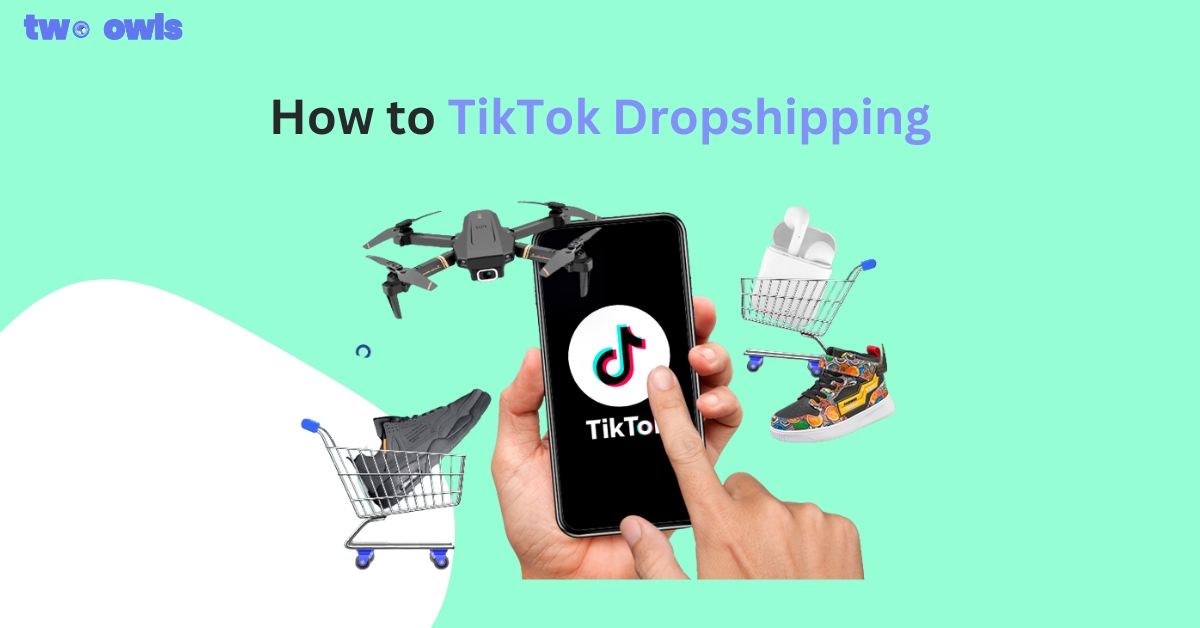
TikTok Dropshipping: How to Build a Profitable Store in 2026
